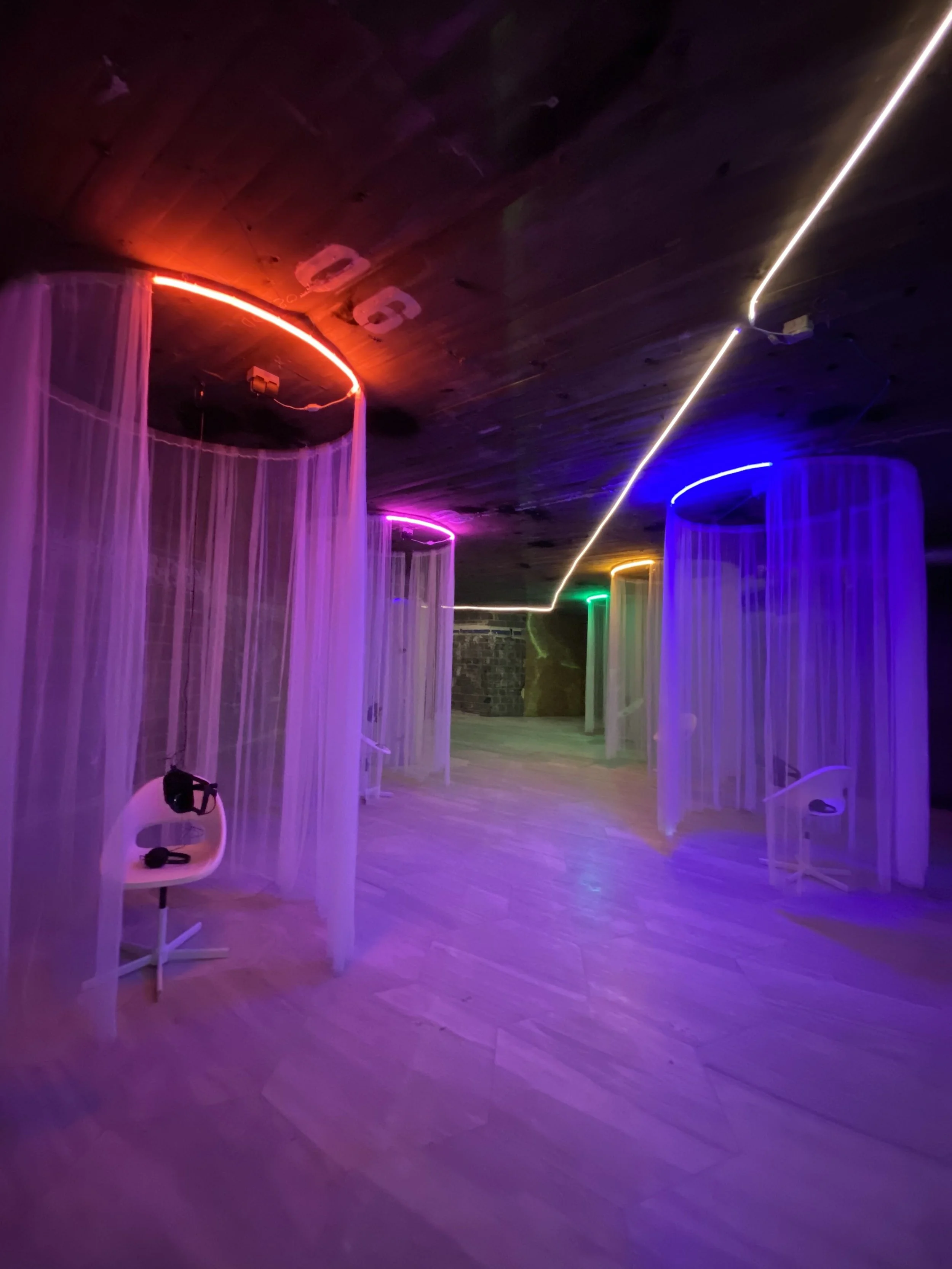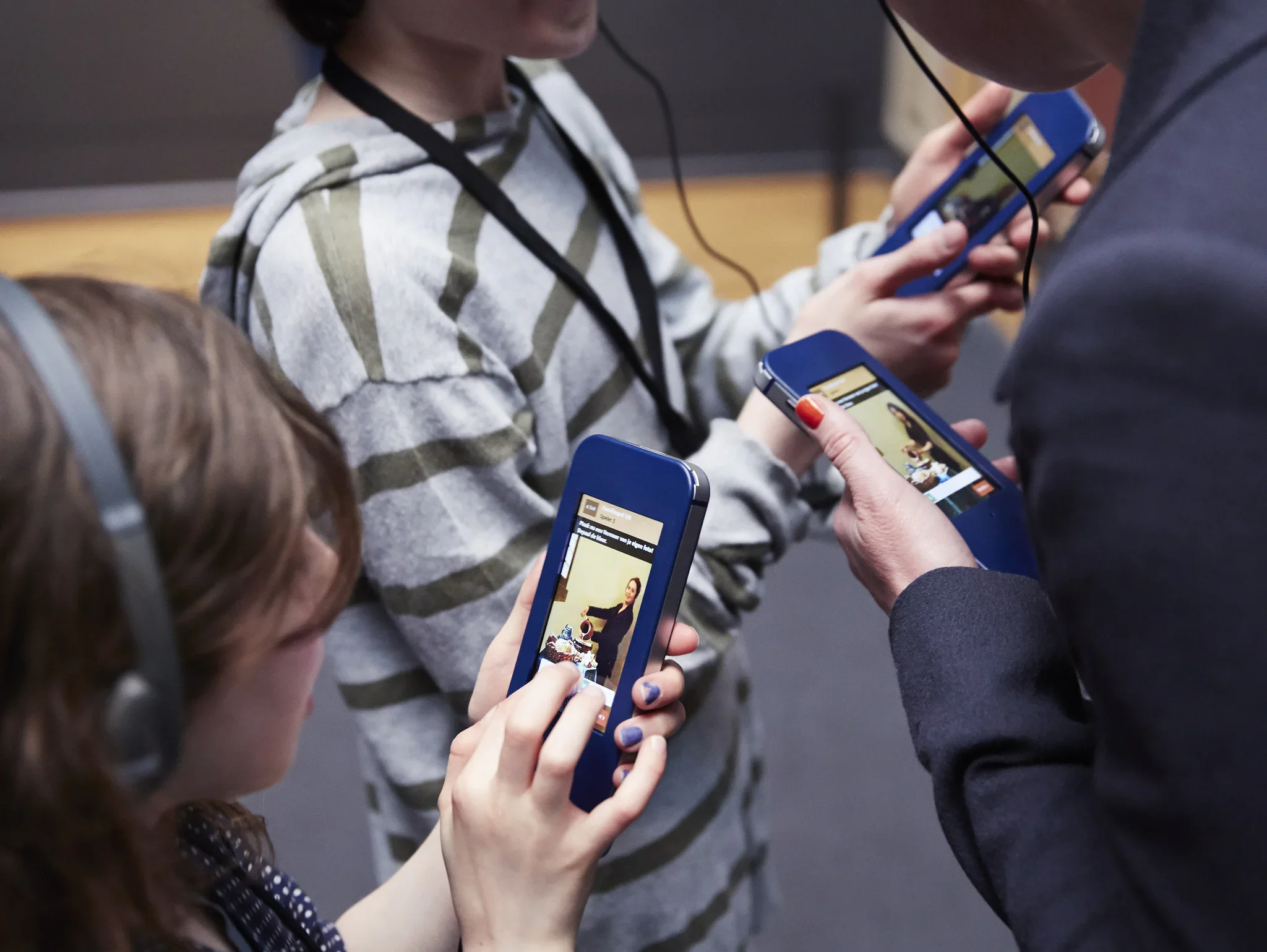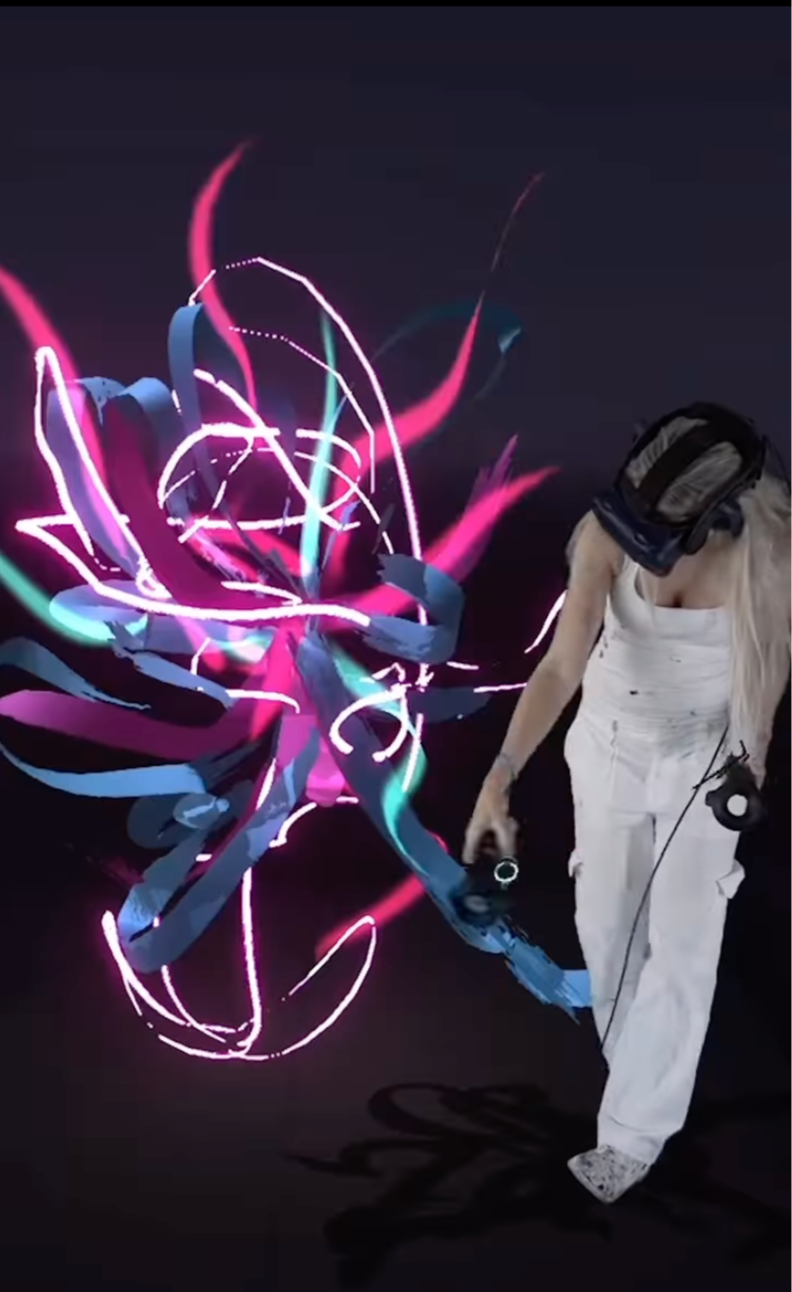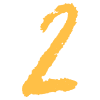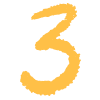EXPLORE PAUL KLEE
An Immersive Journey into Abstract Art
This project reimagines how we encounter Abstract Art. By blending role-based games, holographic encounters, and creative reflection, Explore Paul Klee transforms Paul Klee’s artistic universe into an immersive, participatory journey. Visitors don’t just look at art — they explore, play, and create.
From passive viewing to playful discovery — an interactive exhibition experience.
Project Overview
Duration
April 2023 - September 2023
Institution
M.A. Expanded Media ·
Darmstadt University of Applied Sciences
My Role
Concept Designer · UX Researcher · Experience Designer
Tools
Figma · Sketch · Adobe Creative Suite ·
Unity · Blender · Miroboard
Design Objective
To reimagine the museum experience by enhancing appreciation of abstract art through interactive, gamified, and immersive design.
Image References: Rijksmuseum's innovation programs · Reset Immersive Experience · virtual painting by Sophie Tea.
Problem & Design Challenge
Problem Statement
Abstract art often feels unapproachable, leaving audiences unsure how to connect with it. Traditional museum experiences are frequently passive, offering limited opportunities for engagement.
The Challenge
How might we use new technologies to transform the passive museum experience into an active and engaging one that helps people understand and appreciate abstract art?
The Design Process
Empathize
Conducted comprehensive secondary research on Abstract Art history, museum visitor behavior, and generational preferences. Interviewed 12 participants including art enthusiasts, museum visitors, and industry experts to understand pain points and motivations.
Define
Analyzed findings to identify core problems: lack of engagement with traditional exhibitions, difficulty understanding abstract art, and preference for interactive experiences among target demographics.
Ideate
Generated multiple solution concepts through brainstorming sessions, focusing on interactive technologies, role-playing elements, and creative expression opportunities. Converged on four key directions for further development.
Prototype
Built a comprehensive walkthrough prototype using Unity 3D, designed interactive mobile app interfaces in Figma and Sketch, and created demonstration videos for projected pathway interactions.
Test
Conducted user testing sessions with target audience members, gathering feedback on usability, engagement levels, and overall experience satisfaction to validate design decisions.
Research & Insights
To understand the core challenges, I conducted user interviews to identify common perceptions and frustrations with abstract art and museum visits.
Key Findings:
Intimidation: Many people feel intimidated by abstract art, believing they lack the "correct" knowledge to appreciate it.
Lack of Connection: Visitors struggle to connect with the art or the artist's creative process.
Desire for Engagement: The target audience, particularly younger visitors, expressed a desire for more hands-on, interactive activities rather than simply reading plaques.
Learning by Doing: People felt that a hands-on approach would be a more effective way to learn about and appreciate the creative process.
Target Audiences
Our primary target audiences are Millennials and Generation Z, two groups that have a unique relationship with technology and cultural experiences.
Generation Y (Millennials, 1981-1996)
Collaborative and interactive by nature
Value meaningful experiences over possessions
Natural innovators seeking social impact
Prefer personalized, story-driven content
Generation Z (1997-2012)
First true digital natives
Competitive, value independence and authenticity
Expect immediate feedback and visual learning
Shaped by global challenges, seek purposeful engagement
Shared Needs
Interactive participation
Social connectivity
Personalized experiences
Meaningful cultural engagement
Why Paul Klee?
He was not only a celebrated artist but also a teacher and theorist.
His art is known for its playful, whimsical, and childlike qualities, making it an inviting and non-intimidating entry point.
His famous quote, "Art does not reproduce the visible; rather, it makes visible," aligns perfectly with the project's goal of making abstract concepts tangible.
His work emphasizes fundamental elements like line, shape, and color, which provide a clear and straightforward foundation for learning about abstract art through a hands-on approach.
Proposed Experience
An immersive, multi-stage exhibition experience centered around Paul Klee's artistic world, combining interactive pathways, role-playing quiz games, holographic displays, and creative expression tools to transform passive art viewing into an engaging, educational journey.
Entrance & Introduction
Users enter the museum, read basic info about the artist and exhibition, prepare for the experience.
Step Into the Rabbit Hole
A captivating pathway with projected animations to create a sense of adventure and excitement.
Enter the Artistic World
Enter artist’s art studio, explore his artwork & life. Learn more about the art and story behind through a puzzle game.
Extend the Inspiration
Second interactive and immersive pathway that leads visitors to the next room.
Create Your Own P. Klee
Digital drawing tools for visitors to express their creativity and share with others.
Experience Walkthrogh
Visual Elements
The visual identity reflects Paul Klee's characteristic child-like playfulness and warm color palette to create an approachable, joyful aesthetic.
The organic watercolor textures and hand-drawn icons mirror Klee's spontaneous artistic style, while the warm oranges, blues, and earth tones echo his palette.
This visual approach supports the project's goal of making abstract art feel accessible and inviting to younger audiences who might otherwise find it intimidating.
Fonts
Icons
Watercolor Splash
Colors
Paul Klee
Background Texture
Explore Paul Klee
App Interface Design
This streamlined interface allows visitors to seamlessly integrate their physical and digital experiences, extending their engagement with Paul Klee's art beyond the museum visit.
Create Your Paul Klee App Interface Design
The mobile application for the "Create Your Paul Klee" interactive installation is designed to enhance the visitor experience by enabling them to capture and share their artwork. This user-friendly interface allows visitors to seamlessly save, share, and even order printed souvenirs of their unique creations.
Outcomes & Impact
This interactive experience achieves several key goals:
Enhanced Engagement
By turning passive observation into active participation, the experience fosters a deeper understanding and appreciation of abstract art.
Actionable Data
The apps can track and analyze participant engagement, providing valuable data for cultural event organizers to refine future exhibitions.
Audience Growth
The option for visitors to receive their artwork via email allows organizers to collect contact information for future marketing and community building.
Adaptability
The core concept is highly adaptable and can be tailored to feature other artists and art styles, making it a scalable solution for various museums and cultural events.
Future Considerations
If I were to revisit this project, I would focus on the following:
AI Integration
Explore the use of AI to offer real-time, personalized recommendations for artworks based on a user's quiz performance or drawing style.
A/B Testing
Conduct A/B testing on different UI layouts and interactive elements to optimize the user experience.
Accessibility
Perform a detailed accessibility audit to ensure the experience is fully inclusive for all users, including those with visual or motor impairments.
Feedback Integration
Implement a real-time feedback mechanism within the app to gather immediate insights from participants during the exhibition.
Special Thanks
Organization: Darmstadt University of Applied Sciences Media Department
Supervisor: Prof. Sven Poguntke,
Co-Supervisor: Prof. Thorsten Greiner
Interviewers and testers.
Research grant: Hessische Abschlussförderung (HAB)
Password Protected



